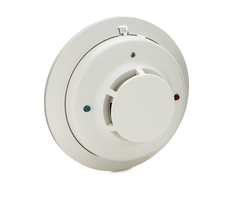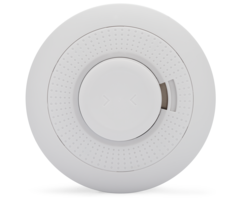Smoke Detectors





Smoke detectors are found in nearly every home and business. In fact, they are usually required by building code. These devices come in many varieties, and only certain types are compatible with security systems. The smoke detectors used with security systems are generally low voltage devices that can be hardwired or wireless. However, many jurisdictions require high voltage smoke detectors that aren't necessarily easy for DIY users to set up on their own. Fortunately, there are still ways of integrating high voltage smokes into an alarm system.
A major distinction for a smoke detector is whether it is hardwired or wireless. A hardwired smoke will need to connect directly with a panel or a high-voltage network. This means running wires across the building. Again, an end user might want to hire a professional to complete the wiring. The good news is that the smoke detector will be permanently integrated with the building and be considered as a feature for the property.
In recent years, wireless smoke detectors have become a very popular option. These devices are extremely easy to install since no wires need to be run. They can often be mounted using double-sided foam tape, which means no holes need to be drilled into the wall or ceiling. When using a wireless smoke detector, you need to make sure that it communicates at a frequency that is compatible with your alarm system. Make sure to check the compatibility for a wireless smoke detector before purchasing.
Smoke detectors can also be divided between photoelectric smoke detectors and ionization smoke detectors. Photoelectric smoke detectors have a small internal light that refracts when smoke enters the detection chamber. This tells the smoke detector to activate and go into alarm. Meanwhile, an ionization smoke detector works using two electrically charged plates in its detection chamber. Smoke entering the chamber will disrupt the current flow and cause the sensor to activate.
Many smoke detectors are also combination devices that do more than just detect smoke. For instance, a smoke detector may also function as heat detector to detect unusually high temperatures that would only occur with a fire. These are referred to as "smoke and heat detectors". Additionally, some smoke detectors also offer the ability to detect harmful carbon monoxide gas. This is great if you want multiple life-saving functions in one convenient device.
High voltage hardwired smokes cannot interface with a security system directly. This is only possible for a low voltage smoke detector or wireless smoke detector that communicates at a compatible wireless frequency. That being said, there is still a way to integrate high voltage smoke detectors in with a security system. This is done using a smoke detector takeover module. This device will listen for the unique temporal sound of an activated smoke detector and alert the system on the device's behalf. This way, you can easily bring your existing hardwired smoke detectors into your new home or business security system.







